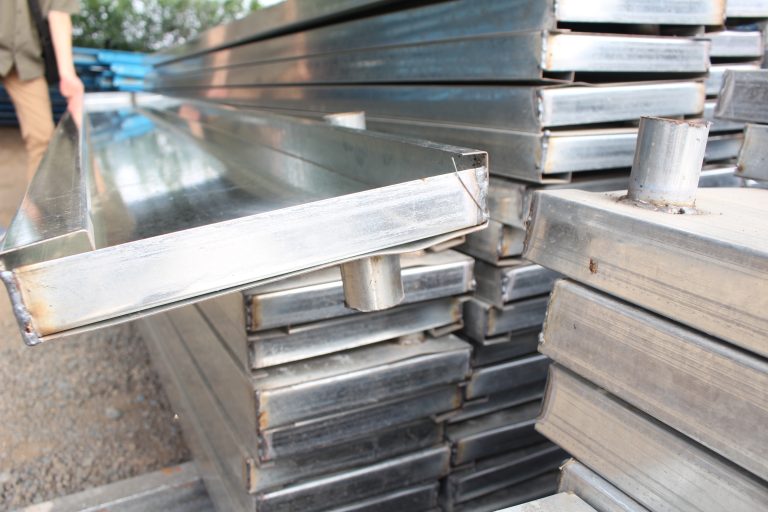Protection and reuse of steel structure in architectural heritage
Table of Contents
Preservation Techniques for Steel Structures in Architectural Heritage
Steel structures have played a significant role in architectural heritage, providing strength, durability, and versatility in various historical buildings and structures. However, over time, these steel structures can deteriorate due to environmental factors, lack of maintenance, or simply the passage of time. In order to preserve these architectural treasures for future generations, it is essential to implement protection and reuse techniques that can help extend the lifespan of steel structures in architectural heritage.
One of the key challenges in preserving steel structures in architectural heritage is preventing corrosion, which can weaken the structural integrity of the steel and compromise the overall stability of the building. Corrosion can be caused by exposure to moisture, pollutants, and other environmental factors, making it essential to implement protective coatings and maintenance strategies to prevent rust and deterioration.
One effective method for protecting steel structures from corrosion is the application of protective coatings, such as paint or specialized corrosion-resistant coatings. These coatings act as a barrier between the steel surface and the surrounding environment, preventing moisture and pollutants from coming into contact with the steel and causing corrosion. Regular inspections and maintenance of these coatings are essential to ensure their effectiveness and longevity in protecting the steel structure.
In addition to protective coatings, cathodic protection systems can also be used to prevent corrosion in steel structures. This technique involves the use of sacrificial anodes or impressed current systems to provide a constant flow of electrons to the steel, effectively preventing the formation of rust and corrosion. Cathodic protection systems are particularly useful in areas with high levels of moisture or pollutants, where traditional protective coatings may not be sufficient to prevent corrosion.
Another important aspect of preserving steel structures in architectural heritage is the reuse and repurposing of existing steel elements in new construction projects. By salvaging and reusing steel beams, columns, and other structural elements from historical buildings, architects and engineers can not only preserve the historical significance of these structures but also reduce the environmental impact of new construction projects.
When reusing steel elements in new construction projects, it is essential to carefully assess the condition of the steel and ensure that it meets current building codes and standards. Structural analysis and testing may be required to determine the load-bearing capacity and integrity of the steel elements, as well as any necessary repairs or modifications to ensure their safety and stability in the new construction project.

Overall, the protection and reuse of steel structures in architectural heritage require a combination of preventative maintenance, protective coatings, and innovative reuse techniques to ensure the longevity and sustainability of these historical treasures. By implementing these preservation techniques, architects, engineers, and preservationists can help safeguard the legacy of steel structures in architectural heritage for future generations to enjoy and appreciate.
Sustainable Practices for Reusing Steel Structures in Architectural Heritage
Steel structures have long been a staple in architectural design, known for their strength, durability, and versatility. As architectural heritage continues to be preserved and repurposed, the protection and reuse of steel structures play a crucial role in sustainable practices. By understanding the benefits of preserving steel structures and implementing proper maintenance techniques, architects and preservationists can ensure the longevity and integrity of these historical elements.
One of the key advantages of steel structures is their ability to withstand the test of time. Unlike other building materials that may deteriorate over the years, steel structures are known for their resilience and longevity. This makes them ideal candidates for reuse in architectural heritage projects, as they can continue to serve a functional purpose while maintaining their historical significance.
In order to protect steel structures in architectural heritage, proper maintenance is essential. This includes regular inspections to identify any signs of corrosion, rust, or other forms of deterioration. By addressing these issues early on, architects and preservationists can prevent further damage and extend the lifespan of the steel structure.
In addition to maintenance, protective coatings can also be applied to steel structures to enhance their durability and resistance to corrosion. These coatings act as a barrier between the steel and external elements, such as moisture and pollutants, helping to preserve the integrity of the structure over time.
When it comes to reusing steel structures in architectural heritage, careful planning and consideration are key. Architects must take into account the structural integrity of the steel, as well as any necessary modifications or reinforcements that may be required to support the new design. By working closely with structural engineers and preservation experts, architects can ensure that the steel structure is safely integrated into the project.
In some cases, steel structures may need to be disassembled and reassembled in order to be reused in architectural heritage projects. This process requires careful documentation and labeling of each component to ensure that the structure can be reconstructed accurately. By taking these precautions, architects can preserve the historical integrity of the steel structure while adapting it to meet modern design standards.
In addition to protecting and reusing steel structures, architects can also explore creative ways to incorporate these elements into their designs. Steel structures can add a unique aesthetic appeal to architectural heritage projects, serving as a reminder of the past while contributing to the overall character of the space. By embracing the history and craftsmanship of steel structures, architects can create innovative and sustainable designs that honor the heritage of the building.
Overall, the protection and reuse of steel structures in architectural heritage are essential components of sustainable practices. By preserving these historical elements and incorporating them into modern designs, architects can create spaces that are both functional and visually striking. With proper maintenance, protective coatings, and careful planning, steel structures can continue to stand the test of time and contribute to the rich tapestry of architectural heritage for generations to come.







